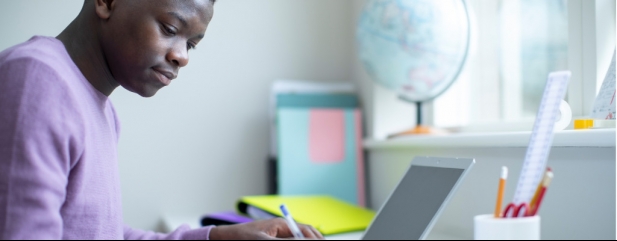Archived article
Please note that tax, investment, pension and ISA rules can change and the information and any views contained in this article may now be inaccurate.
Next steps for 18-year-olds as their child trust funds mature

This September marks the 18th anniversary of the first child trust funds being issued, which means that the first recipients will be able to get their hands on the money.
With lots of people unaware they even have one, let alone how to manage it, what should they be doing with the money?
Here we explain how they work and the action that might need to be taken.
What is a child trust fund?
Introduced by the Government for children born from 2002 onwards to help encourage saving for children, child trust funds were tax-efficient accounts for children that have since been replaced by Junior ISAs.
The Government contributed either £250 or £500 (depending on family income) and then topped that up with another £250 or £500 when the child turned seven to help jumpstart their savings.
Parents could make contributions each year to add to this amount, with varying limits depending on the year – the current limit is the same as the Junior ISA, so £9,000.
There’s no tax to pay on the child trust fund income or any profit it makes.
The money is locked up until the child turned 18 and then it becomes theirs to spend, save or invest as they want to.
If you’re not sure where a child trust fund is held, you can go to the Government website and fill out a form to find the provider. You’ll need a Government Gateway user ID and password to do this, but if you do not have a user ID you can create one when you fill in the online form.
What do I do if I have a child trust fund?
Anyone with a child trust fund can either switch it to a new child trust fund to get a better rate or transfer it into a Junior ISA if they want to, either a cash or stocks and shares version.
If you want to switch to a new child trust fund your options are fairly limited as not many providers are offering them to new customers. One that does is Skipton Building Society, which pays 2% interest.
You’ll likely get a better rate on a cash product if you switch to a Junior ISA instead. The current top Junior ISA rate that accepts transfers from child trust funds is 3.25% from NS&I, for example. Some local building societies might offer better rates to local customers though, so check with the names near to where you live.
Switching to a Stocks and Shares Junior ISA could lead to better returns and might be better if you have a longer time until the child reaches the age of 18 or plans to access the money. Even if you initially opted for an investment child trust fund, you could find switching to a Junior ISA is better as you’ll have a greater spread of investment options and might find the charges are cheaper. Please note that you can lose money as well as make it with investment products.
What if my child turns 18 this year?
If your child turns 18 this year, they will be able to access their child trust fund money and will have to make some decisions. They can either cash it in and spend the money, or they can choose to keep it saved and even add to it.
If they want to keep it saved it can keep its tax advantages, so they’ll just need to decide what to do with it. They can either transfer it to a Cash ISA, Stocks and Shares ISA, Innovative Finance ISA or a Lifetime ISA.
Any transfers won’t count towards their annual ISA subscription, so that means whatever is transferred, your child will still be able to put £20,000 into ISAs in total in the current tax year. However, if they move it into a Lifetime ISA it will count towards the £4,000 annual limit for this account.
If they don’t do anything with the money it will retain its tax perks and there are two options.
The child trust fund provider could transfer it into a ‘protected account’, where it still won’t incur income or capital gains tax and it will sit until the account holder does something with it.
The provider could also decide to transfer it into a Cash ISA or Stocks and Shares ISA, if they offer one. But still no part of the annual ISA subscription limit would be used up by this.
How much will be in the child trust fund?
This depends on three big factors: how much the Government put in, whether any more money was added to it and whether it was left in cash or invested.
Some children from low income families who got both Government contributions will have a total of £1,000 in their account, plus any further contributions made by parents.
If there were no contributions and the money earned an average of 2% interest a year the pot would be worth £1,336 by this September.
If the child only received two payments of £250 and earned 2% a year interest the pot would be worth £668 today. Alternatively, if some had got two payments of £250, added nothing more but it had been invested in the FTSE All-Share that entire time it would be worth £1,297 today.
Important information:
These articles are provided by Shares magazine which is published by AJ Bell Media, a part of AJ Bell. Shares is not written by AJ Bell.
Shares is provided for your general information and use and is not a personal recommendation to invest. It is not intended to be relied upon by you in making or not making any investment decisions. The investments referred to in these articles will not be suitable for all investors. If in doubt please seek appropriate independent financial advice.
Investors acting on the information in these articles do so at their own risk and AJ Bell Media and its staff do not accept liability for losses suffered by investors as a result of their investment decisions.
Issue contents
Editor's View
Feature
Great Ideas
News
- BT takeover hopes shot down by analysts
- Balfour Beatty's £2bn contract win fails to move its shares
- BlackRock World Mining’s ’decade of lost returns’
- Analysts say Greencoat Renewables cannot justify premium rating
- M&A revival predicted after worst first-half for deals since 2010
- Investor hopes raised over Covid treatments

 magazine
magazine









